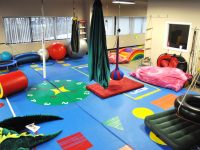If you’ve taken your child to any form of therapy outside your house, you’ve likely heard about sensory rooms. Sensory rooms are beneficial to kids with:
- Sensory processing disorder
- Autism
- ADHD
- Other conditions
Sometimes due to busy schedules or issues with stimuli, attending sensory processing disorder therapy outside the house may be difficult. This is where creating a sensory room in your own home can be beneficial to your entire family.
Creating your own effective sensory room in your San Diego home doesn’t have to be expensive and you really don’t even have to dedicate one entire room to make it effective. But, once you do dedicate some space, you’ll need to equip it with certain sensory tools. Here are three effective tools and ideas you can start off with.
Consider Your Child’s Needs
When setting up a sensory room in your home, your first step in planning is to start with your child. Each child is unique and the type of sensory room you create for them should be as well.
Lighting
High-tech lighting equipment isn’t necessary. You can create your own relaxing glow in the sensory room by using things like:
- Net lights
- Christmas lights
- Glow sticks
- Battery-powered candles
- Lava lamps
- String lights
The lighting in the room can be powerful. It changes the way your child can feel and influences them in subtle ways. For instance, overhead lights emitting cool tones can make children feel uncomfortable. Soft, warm lighting can help relax them.
Tactile media
A shallow storage container and low table can work as a sensory bin. You can rotate various textures as well. A water/sand table is perfect for flexibility and makes use and clean up easy. Beans, rice, pasta, kinetic sand and shaving cream all make fun tactile media your child can explore. Play-Doh and putty can help your child develop intrinsic hand muscles and carryover to fine motor skills.
As you start introducing various sensory items, you’ll learn more about the sensory preferences of your child by observing what they enjoy and gravitate to. For instance, you may find that they enjoy activities that focus on their visual perception skills. Often, determining what can help a child self-regulate will take some exploration and a little trial and error.
Take a look at some of the therapy items, sensory activities and toys your child plays with during their sessions. If they enjoy performing certain tasks or working with certain items, then try and find similar items to put in your sensory space. Talk with their San Diego pediatric occupational therapist about what your child enjoyed working with, then use these findings to find similar things.
